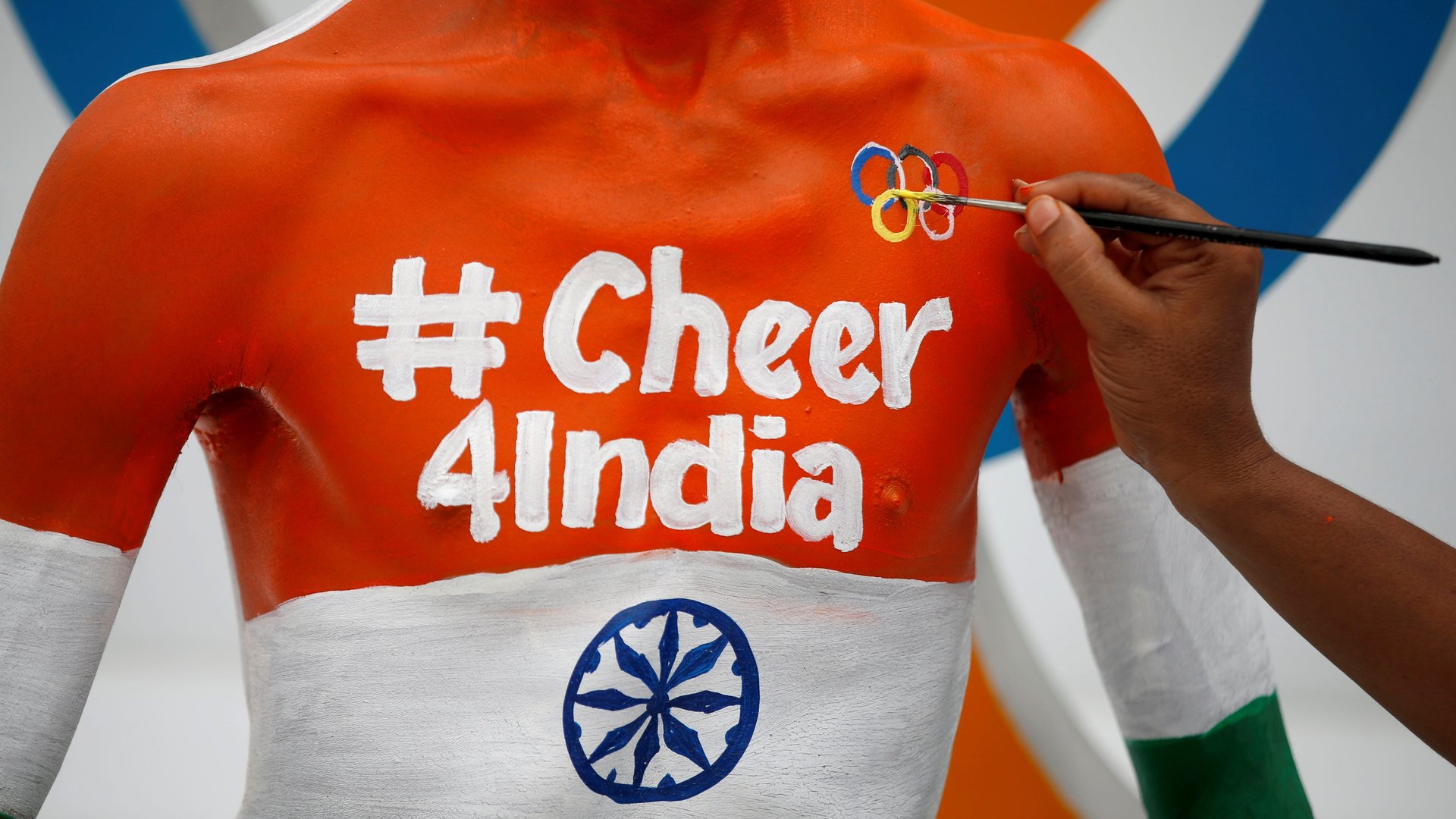Will sending its largest-ever contingent change India’s fortunes at the Olympics?
This year, India is going big at the Olympic Games—literally.


This year, India is going big at the Olympic Games—literally.
The south Asian nation is sending its largest-ever contingent comprising a record 119 athletes to compete at 85 medal events.
There are many firsts in this contingent. For instance, India’s shooting contingent is its biggest ever at 15 competitors. The country’s sailing team—four, including India’s first female sailor at the games—is also its largest ever. India also saw its first equestrian to qualify in 19 years and the first fencer to ever qualify. And all eyes are on several star players: At least 10 of these athletes rank in the top three in the world.
But will more participants mean more medals?
In 2016, India had sent 117 players to Rio, pinning hopes on winning between 10 and 14 medals but clinched just two. The performance was disappointing, to say the least.
This year, Covid-19 has dealt a huge blow. Domestic sporting events were cancelled, and foreign training and competitions were mostly off the table for Indian athletes. India’s top medal contender Neeraj Chopra, who competes in the javelin throw, spent 400 days without competition or exposure trips.
And the woes don’t end at the games either. Countries hit hard by the pandemic are also expected to play by a more stringent set of rules, testing athletes daily for a week before arriving at the Olympic Village, and isolating them for three days once they do.
However, the pandemic is only making a bad problem worse.
India’s history at the Olympics
India has the worst population to medals ratio at the Olympics. Since India’s maiden appearance at the Summer Olympics in 1900, the country has managed to score just 28 medals overall.
The reason India always consistently falls short on the world forum is deep-rooted and systemic.
Perhaps the biggest reason is that the country has a notorious reputation for neglecting and under-funding sports. That’s why a luge competitor had to screw wheels to the bottom of his sledge and practice on Himalayan roads, and a medal-winning gymnast learnt to vault off a discarded scooter.
The cricket-crazed nation has paid little attention to any other sport. Currently, India recognizes 59 National Sports Federations, up from 48 in 2016. This is crucial because not recognizing sports had in the past led to clashes between the federations and Indian Olympics Association and dried up funding.
Many athletes who’ve made it to the Olympics in the past have done so by paying for their training out of their own pockets or bagging generous corporate sponsorships. This means those who lack these privileges remain devoid of opportunity.
In the same vein, caste politics likely play a part. People who excel in sport are often discouraged from pursuing it to top levels by their families and the wider community, according to Ronojoy Sen, a professor of the University of Singapore and author of Nation at Play: A History of Sport in India. Also, social stratification keeps different castes from playing sports together.
“The lower castes constitute the bulk of India’s population, and these lower castes are also the ones who don’t have access to education, don’t have access to good nutrition, health,” Sen told the BBC.
It doesn’t help that sport is not considered a lucrative profession. Although champions are rewarded, well-performing almost-there athletes aren’t able to make a living off the sport. Most of them work jobs in the railroads, police, or military to earn a stable paycheck.
India at Tokyo Olympics 2021
Monetarily, the situation seems to be looking up this time. Youth affairs and sports minister Kiren Rijiju has assured there is no shortage of funding. At least nine private sector companies have stepped up to provide funds.
But corruption, lack of transparency, and under utilization of resources still run rampant. And sports governance is not India’s strong suit.
In 2014, India set up the Target Olympic Podium Scheme (TOPS) to provide promising athletes with personal coaches and other staff fees, cost of travel during competitions, purchase of equipment, and pocket allowance. In 2016, it spent the bulk of the allocated Rs36.85 crore ($4.9 million) on shooting and track and field athletes—both categories that returned home empty-handed. This time, the TOPS scheme is supporting over 120 athletes, up from 106 during the Rio games, and yet again, shooting and athletics have gotten the most attention.